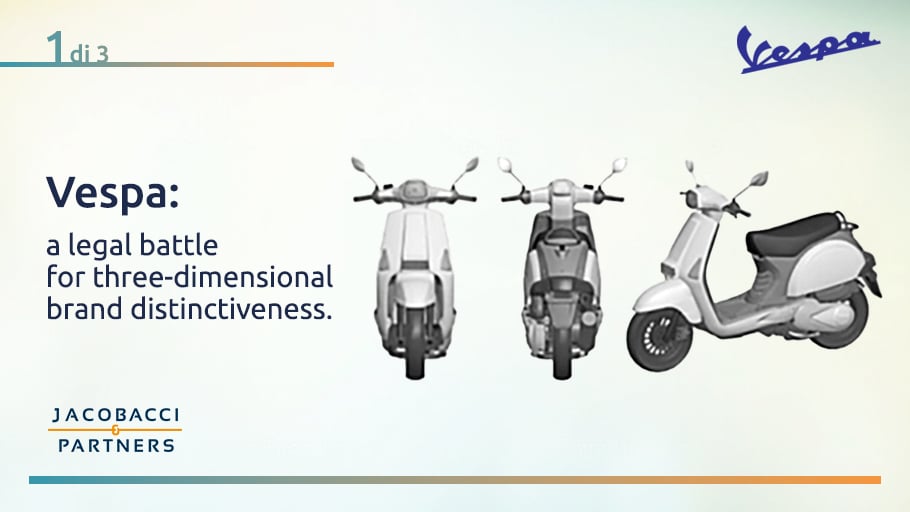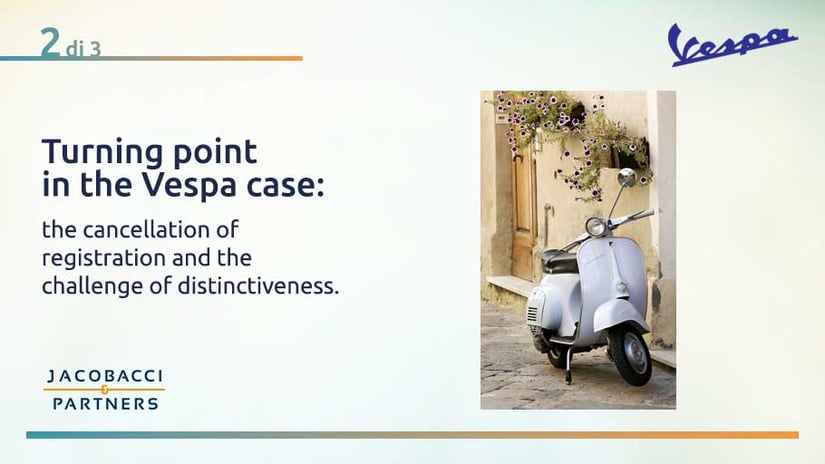Validity of the Vespa Three-Dimensional Trademark

Back in 2013, assisted by Jacobacci & Partners, Piaggio obtained protection for the shape of the Vespa as a three-dimensional trademark across the European Union. This sign represented an icon of Italian industry and ingenuity, demonstrating a remarkable distinctiveness.
However, in 2014, the Chinese company Zhejiang Zhongneng Industry Co. Ltd. (Znen) initiated a cancellation action against this three-dimensional trademark. Znen presented five arguments: the trademark was anticipated by Znen's Revival Community Design, lacked distinctiveness, consisted of a shape necessary to obtain a technical result as well asgave substantial value to the good, and the applicant had acted in bad faith at the time of filing the trademark application.
In order to neutralise the adverse claim based on Znen's Revival Community Design, Piaggio initiated a parallel cancellation action against the design registration, arguing that the latter lacked individual character compared to the design of the shape protected by the Vespa three-dimensional trademark, marketed since 2005. The trademark cancellation proceedings was suspended until the decision of the Court of Justice of the European Union, which ultimately confirmed the validity of the Revival Community Design.
In the decision regarding the trademark cancellation proceedings, the EUIPO (European Union Intellectual Property Office) recalled the Court's decision, stating that Piaggio's three-dimensional trademark produced a different overall impression than Znen’s Revival Community Design. The Cancellation Division then dismissed the cancellation action on the remaining grounds of lack of distinctiveness and of technical or substantial value grounds, as well as on the grounds of bad faith, Znen having failed to prove their existence..
The Board of Appeal’s decision

Following Znen's appeal, the Fifth Board of Appeal declared the invalidity of Piaggio's trademark registration in 2021, claiming it lacked distinctive character. The Board of Appeal stated that Piaggio's evidence of distinctiveness was insufficient to demonstrate acquired distinctiveness through use across the entire territory of the European Union.
Specifically, the Board of Appeal emphasized that many pieces of evidence did not refer to the registered trademark per se but to various Vespa models sold over the years, some of which differed significantly from the shape in question. Additionally, it doubted the reliability of many pieces of evidence provided by Piaggio, such as Excel files containing sales data and advertising investments, stating that they needed to be supported by official or independent third-party’s documents.
Regarding market surveys, the Board of Appeal considered them insufficient as they only covered twelve EU Member States, even though they represented a significant percentage of the entire EU population.
Court of Justice of the European Union’s judgment

Piaggio appealed the Board of Appeal’s decision before the Court of Justice of the European Union. In November 2023, the Court ruled in favor of Piaggio, overturning the Board of Appeal’s decision.
The Court criticized the Board of Appeal for not considering the overall value of the evidence filed by Piaggio. It emphasized that many of these pieces of evidence, although related to different Vespa models, still contributed to demonstrating the acquired distinctiveness of the trademark. Moreover, the Court rejected the argument that the evidence did not cover the entire territory of the Union, clarifying that it was not necessary to prove distinctiveness in each Member State separately.
This Court’s judgment represents a significant development in the challenging battle for the registration of shape trademarks that have acquired distinctiveness through use. It is now clear that it is not necessary to prove acquired distinctiveness in each Member State separately, and the evidence can be assessed as a whole. The judgment rewards the efforts of a rights holder in promoting and fixing a shape in the consumers’ mind.




